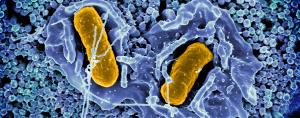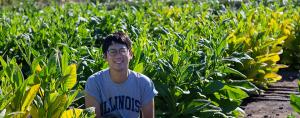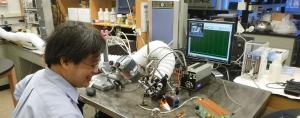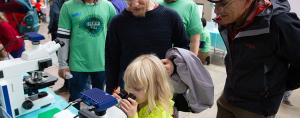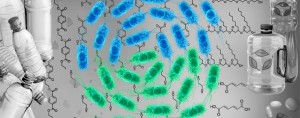News Archive
Researchers design new open-source technology for interfacing with living neurons
Shelby Lawson
Neurons intricately communicate and respond to stimuli within a vast network, orchestrating essential functions from basic bodily processes to complex thoughts.
New insights into what helps Salmonella cause infections
Ananya Sen
Salmonella is notorious for surviving and replicating in macrophages, which are normally lethal to invading bacteria because of their inhospitable environment.
Charles Schroeder
Amber Rose
To solve the problems of today’s society, an interdisciplinary approach to research is necessary.
Researchers improve seed nitrogen content by reducing plant chlorophyll levels
Ananya Sen
Chlorophyll plays a pivotal role in photosynthesis, which is why plants have evolved to have high chlorophyll levels in their leaves.
Nanoparticle transport across the blood brain barrier increases with Alzheimer’s and age, study finds
Shelby Lawson
Neurodegenerative disorders such as Alzheimer’s disease affect more than 270 million people worldwide.
Genetic sequencing uncovers unexpected source of pathogens in floodwaters
Lois Yoksoulian
Researchers report in the journal Geohealth that local rivers and streams were the source of the Salmonella enterica contamination along coastal North Car
Genetics of host plants determine what microorganisms they attract
Ananya Sen
Plants often develop communities with microorganisms in their roots, which influences plant health and development.
Pesticides and adjuvants disrupt honey bee’s sense of smell
Ananya Sen
It has long been known that exposure to pesticide sprays is harmful to honey bees.
IGB Early Innovator Program
The IGB Early Innovator Program (EIP) is a 10-week summer program hosted by the Carl R.
Genome Day brings the wonders of genetics and nature to life
Kevin Neumann
From microorganisms and DNA extraction to poison frogs and lemon-scented ants, the Carl R.
Harnessing microbial consortia to tackle plastic pollution
Bethan Owen
Plastic pollution is increasing rapidly. Every year, the world produces 390 tons of plastic, with a staggering 91% destined for incineration or landfill disposal.
New model allows for learning and prediction of microbial interactions
Shelby Lawson
A tiny but prolific world of microbes encompasses everything around us, both inside and out.

